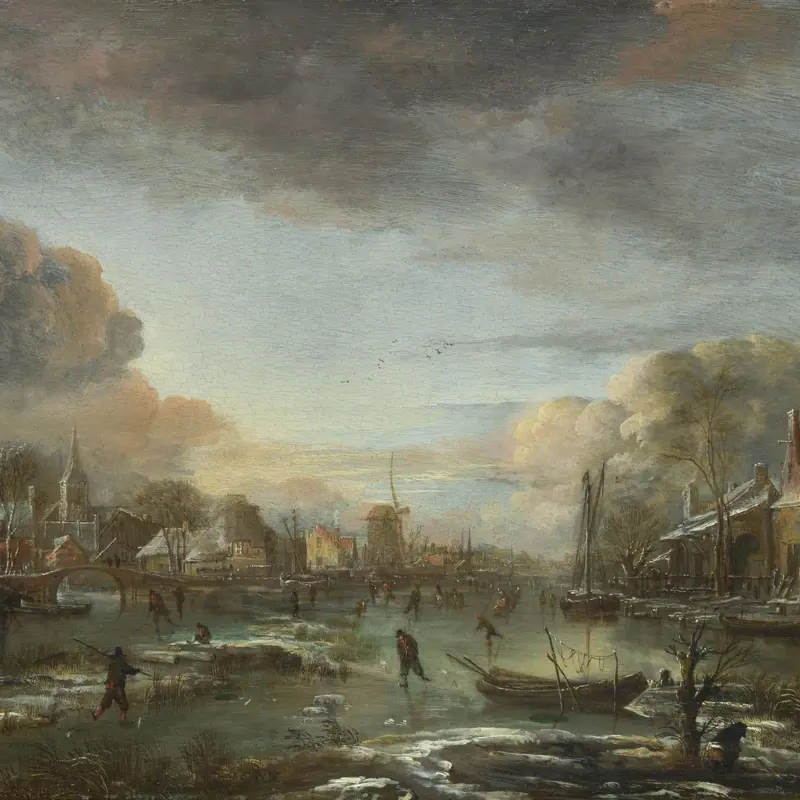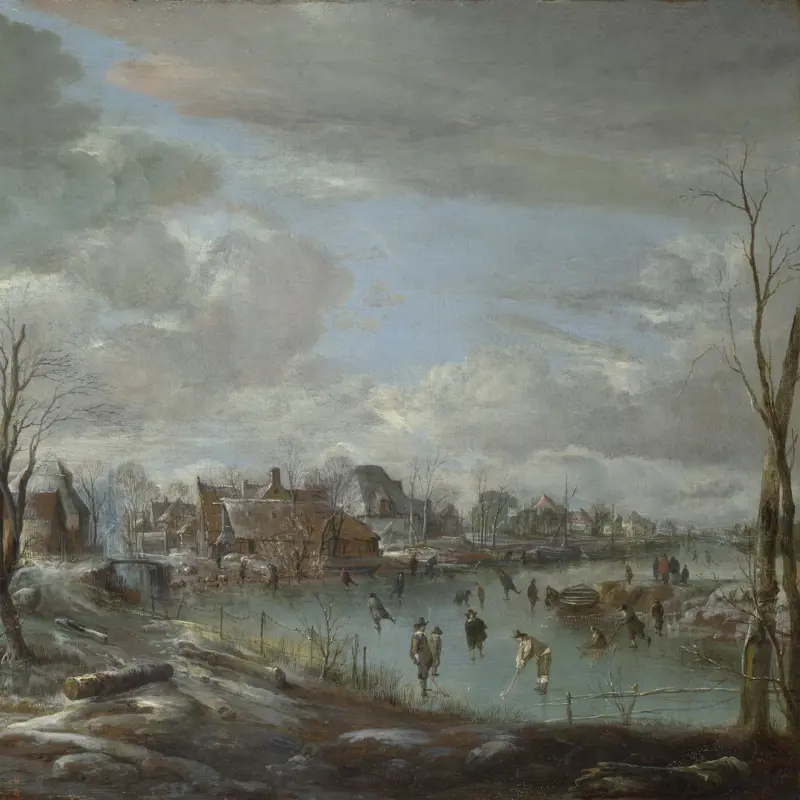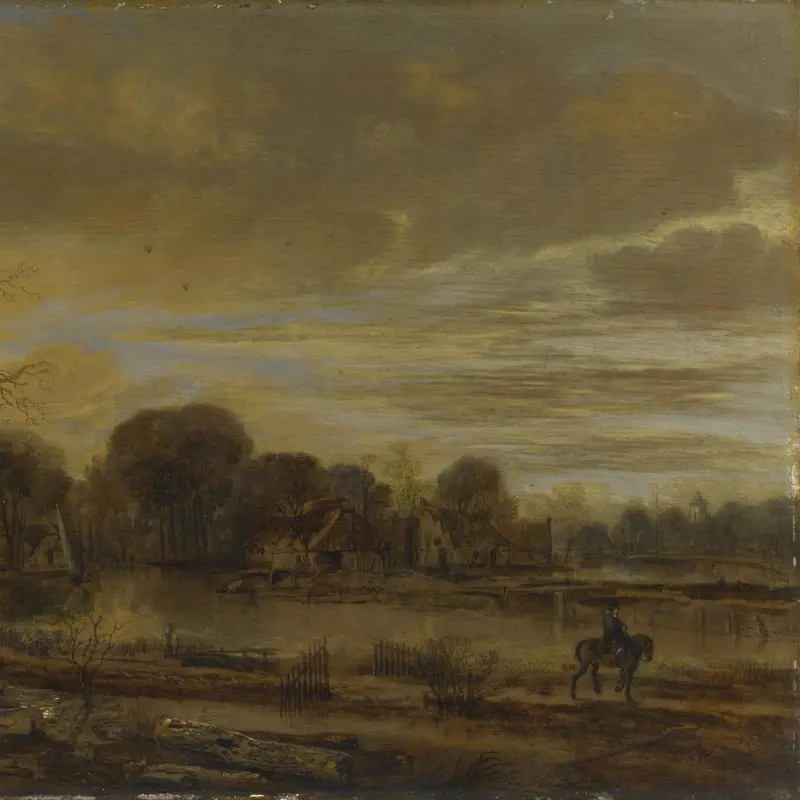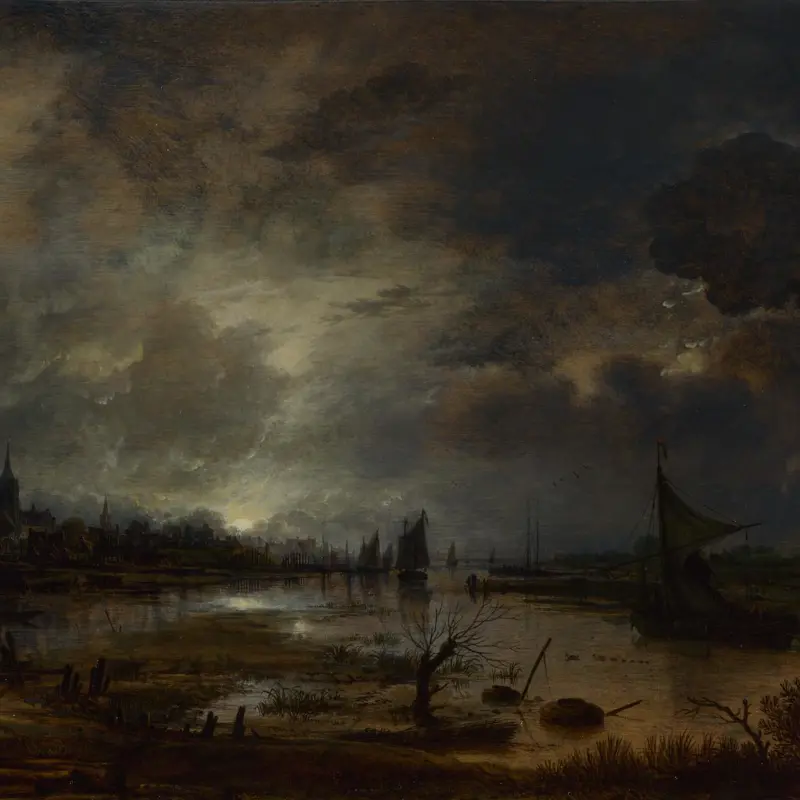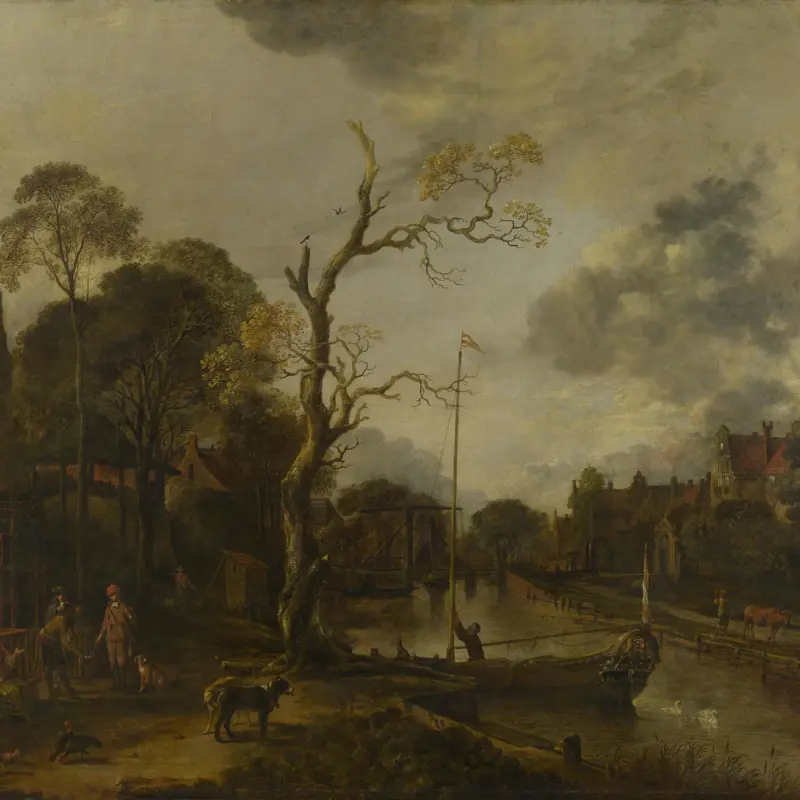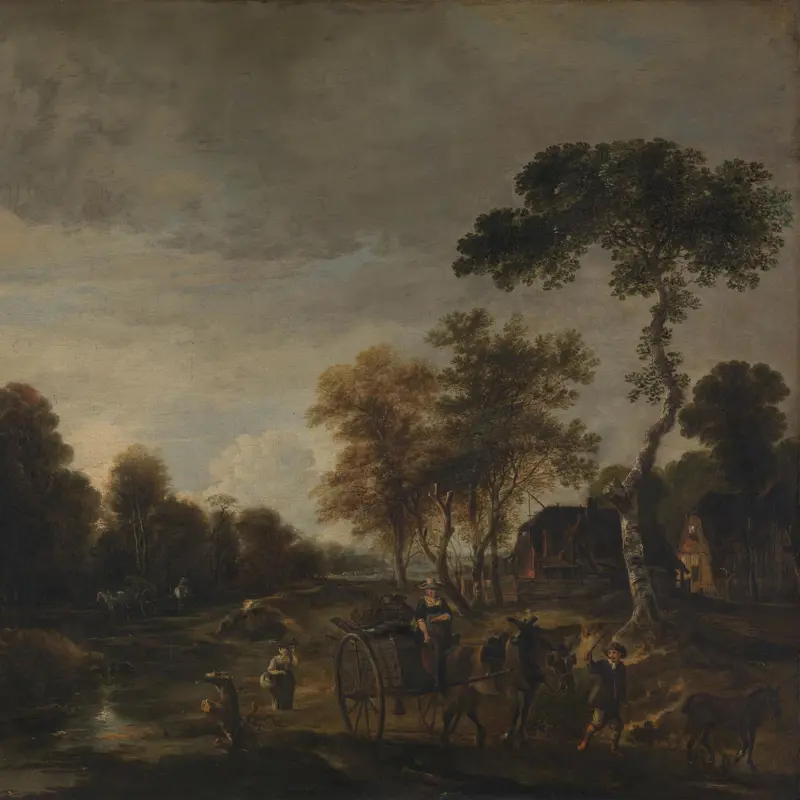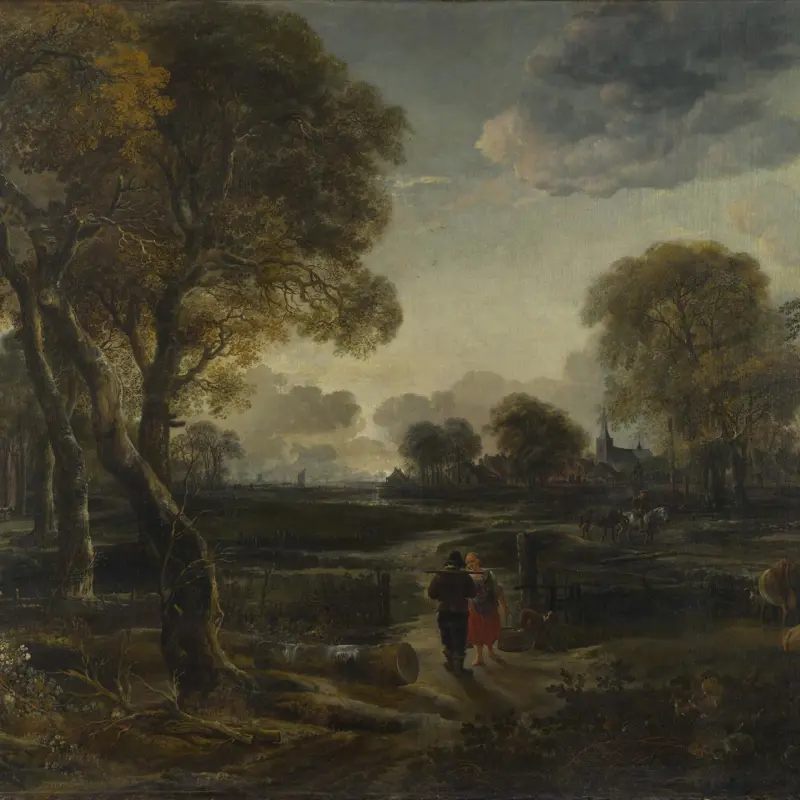Aert van der Neer, 'A Village by a River in Moonlight', about 1645
About the work
Overview
Nowadays, many of us have little experience of clear moonlight – it’s often washed out by street lights or car headlamps. But in the seventeenth century the many moods and lighting effects of the night sky and the different phases and heights of the moon would have been a familiar part of everyday life. It was only in 1670, about 25 years after this picture was painted, that Amsterdam became the first city in Europe to install a system of street lighting, invented by the painter Jan van der Heyden.
Van der Neer, who lived in Amsterdam, specialised in capturing landscapes in moonlight and at dawn and dusk, and this is a typical example of his work. It probably doesn‘t depict a ’real' place, but one composed by the artist so that he could highlight the reflections of light on the mirror-still water, and the carefully arranged silhouettes of the church, the windmill and the boats lying off the quayside.
Key facts
Details
- Full title
- A Village by a River in Moonlight
- Artist
- Aert van der Neer
- Artist dates
- 1603/4 - 1677
- Date made
- About 1645
- Medium and support
- Oil on wood (probably oak)
- Dimensions
- 19.7 × 28.3 cm
- Acquisition credit
- Salting Bequest, 1910
- Inventory number
- NG2536
- Location
- Not on display
- Collection
- Main Collection
- Previous owners
Provenance
Additional information
Text extracted from the ‘Provenance’ section of the catalogue entry in Neil MacLaren, revised and expanded by Christopher Brown, ‘National Gallery Catalogues: The Dutch School: 1600–1900’, London 1991; for further information, see the full catalogue entry.
Bibliography
-
1907C. Hofstede de Groot, Catalogue Raisonné of the Works of the Most Eminent Dutch Painters of the Seventeenth Century, 10 vols, London 1907
-
1907C. Hofstede de Groot, Catalogue Raisonné of the Works of the Most Eminent Dutch Painters of the Seventeenth Century, 10 vols, London 1907
-
1960Maclaren, Neil, National Gallery Catalogues: The Dutch School, 2 vols, London 1960
-
1991Maclaren, Neil, revised by Christopher Brown, National Gallery Catalogues: The Dutch School, 1600-1900, 2nd edn (revised and expanded), 2 vols, London 1991
-
2001
C. Baker and T. Henry, The National Gallery: Complete Illustrated Catalogue, London 2001
About this record
If you know more about this work or have spotted an error, please contact us. Please note that exhibition histories are listed from 2009 onwards. Bibliographies may not be complete; more comprehensive information is available in the National Gallery Library.

